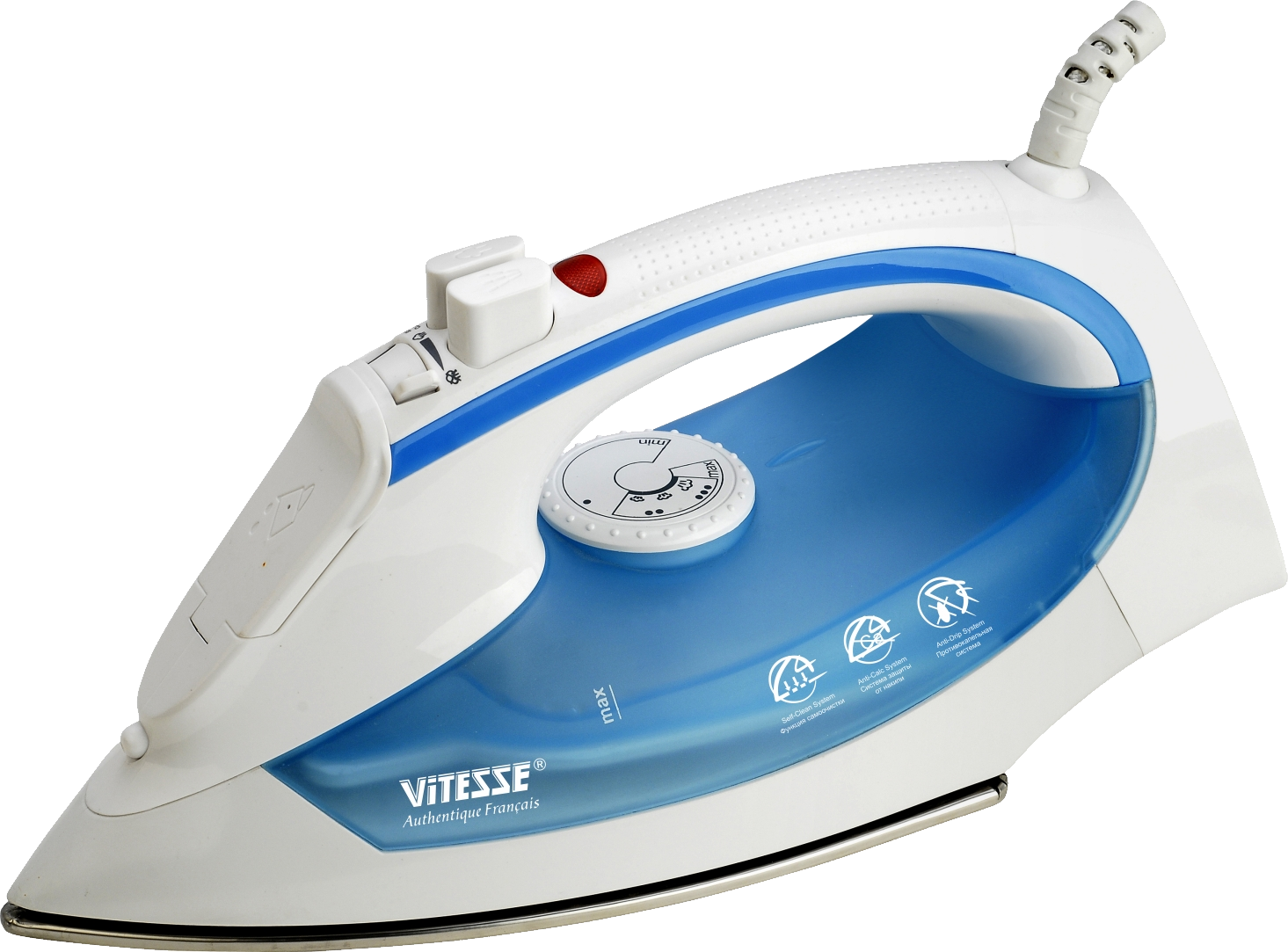
This image has format transparent PNG with resolution 1465x1083.
You can download this image in best resolution from this page and use it for design and web design.
Iron PNG with transparent background you can download for free, just click on download button.
A clothes iron (also flatiron, smoothing iron, or simply iron) is a small appliance that, when heated, is used to press clothes to remove creases. Domestic irons generally range in operating temperature from between 250 °F (121 °C) to 360 °F (182 °C). It is named for the metal (iron) of which the device was historically made, and the use of it is generally called ironing. Ironing works by loosening the ties between the long chains of molecules that exist in polymer fiber materials. With the heat and the weight of the ironing plate, the fibers are stretched and the fabric maintains its new shape when cool. Some materials, such as cotton, require the use of water to loosen the intermolecular bonds.
Before the introduction of electricity, irons were heated by combustion, either in a fire or with some internal arrangement. An "electric flatiron" was invented by American Henry W. Seeley and patented on June 6, 1882. It weighed almost 15 pounds (6.8 kg) and took a long time to heat. The UK Electricity Association is reported to have said that an electric iron with a carbon arc appeared in France in 1880, but this is considered doubtful.
Metal pans filled with hot coals were used for smoothing fabrics in China in the 1st century BC. From the 17th century, sadirons or sad irons (from Middle English "sad", meaning "solid", used in modern English through the 1800s) began to be used. They were thick slabs of cast iron, triangular and with a handle, heated in a fire or on a stove. These were also called flat irons. A later design consisted of an iron box which could be filled with hot coals, which had to be periodically aerated by attaching a bellows. In Kerala in India, burning coconut shells were used instead of charcoal, as they have a similar heating capacity. This method is still in use as a backup device, since power outages are frequent. Other box irons had heated metal inserts instead of hot coals.
Another solution was to employ a cluster of solid irons that were heated from a single source: As the iron currently in use cooled down, it could be quickly replaced by a hot one. In the late nineteenth and early twentieth centuries, there were many irons in use that were heated by fuels such as kerosene, ethanol, whale oil, natural gas, carbide gas (acetylene, as with carbide lamps), or even gasoline. Some houses were equipped with a system of pipes for distributing natural gas or carbide gas to different rooms in order to operate appliances such as irons, in addition to lights. Despite the risk of fire, liquid-fuel irons were sold in U.S. rural areas up through World War II.
In the industrialized world, these designs have been superseded by the electric iron, which uses resistive heating from an electric current. The hot plate, called the sole plate, is made of aluminium or stainless steel polished to be as smooth as possible; it is sometimes coated with a low-friction heat-resistant plastic to reduce friction below that of the metal plate. The heating element is controlled by a thermostat that switches the current on and off to maintain the selected temperature. The invention of the resistively heated electric iron is credited to Henry W. Seeley of New York City in 1882. In the same year an iron heated by a carbon arc was introduced in France, but was too dangerous to be successful. The early electric irons had no easy way to control their temperature, and the first thermostatically controlled electric iron appeared in the 1920s. Later, steam was used to iron clothing. Credit for the invention of the steam iron goes to Thomas Sears. The first commercially available electric steam iron was introduced in 1926 by a New York drying and cleaning company, Eldec, but was not a commercial success. The patent for an electric steam iron and dampener was issued to Max Skolnik of Chicago in 1934. In 1938, Skolnik granted the Steam-O-Matic Corporation of New York the exclusive right to manufacture steam-electric irons. This was the first steam iron to achieve any degree of popularity, and led the way to more widespread use of the electric steam iron during the 1940s and 1950s.
In this gallery you can download free PNG images: Clothes iron PNG images free download